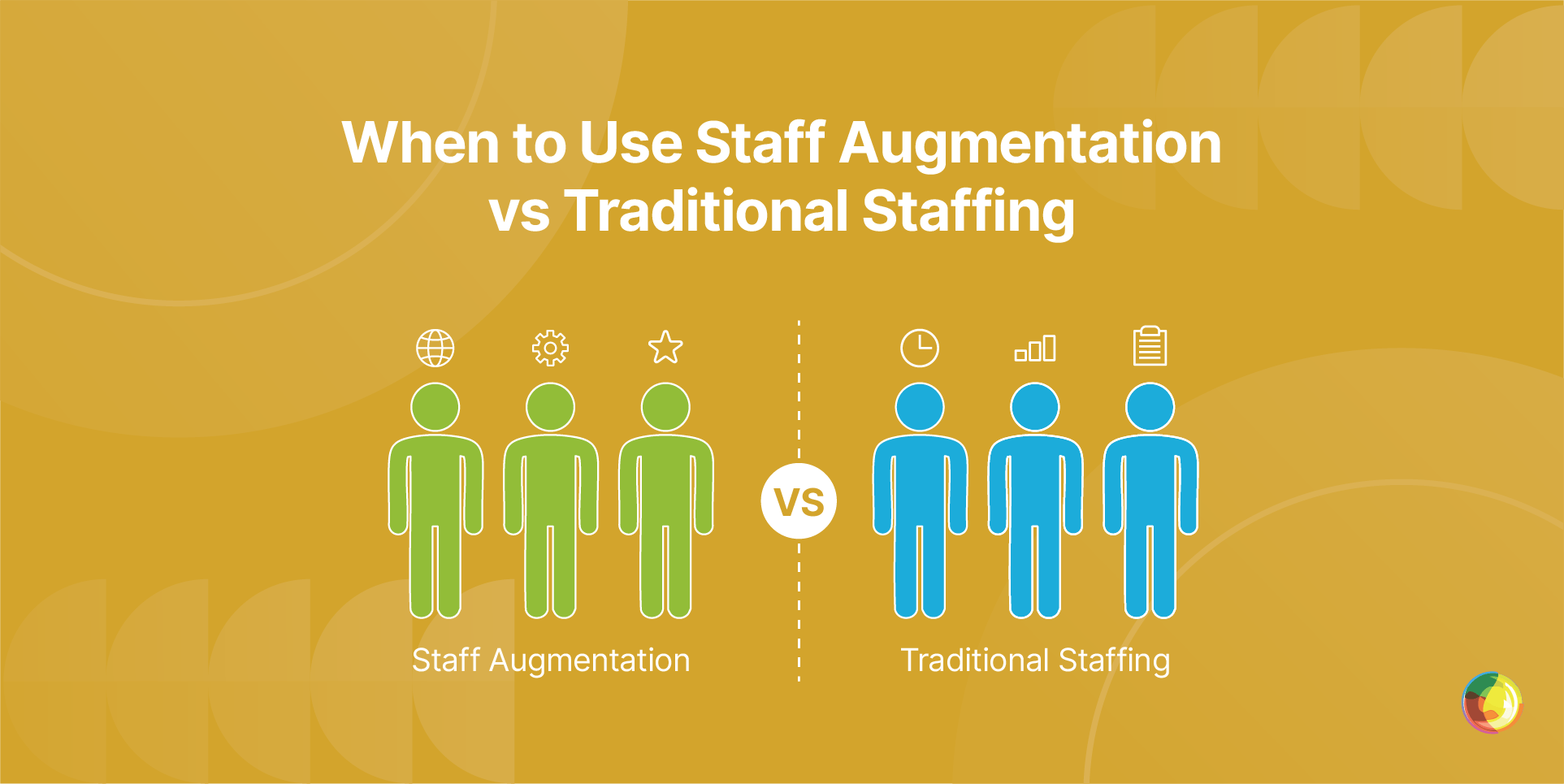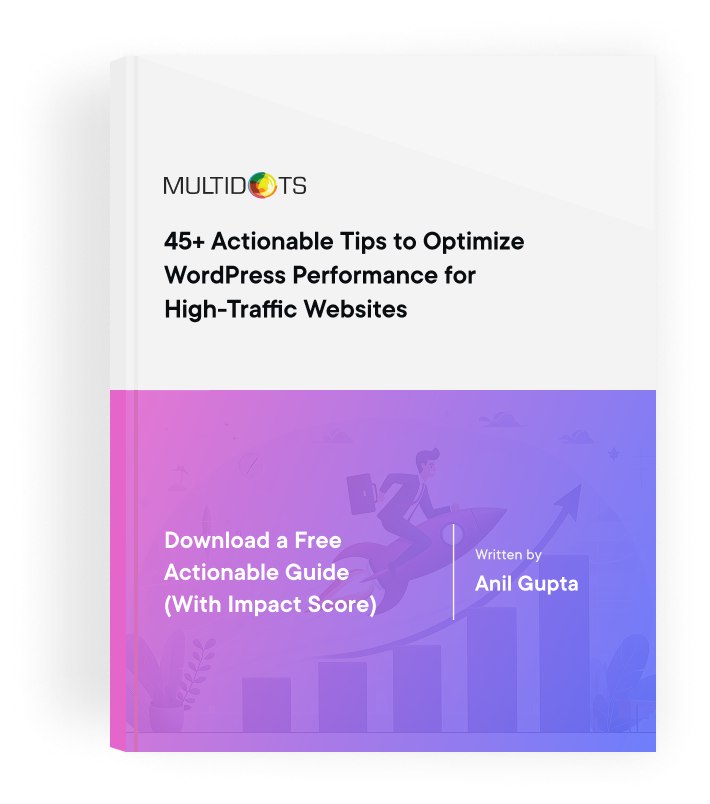When to Use Staff Augmentation vs Traditional Staffing
Staff augmentation vs traditional staffing: Discover the pros, cons, and when each approach makes the most business sense in this quick, no-fluff guide.

Table of Contents
Key Takeaways
- Staff augmentation offers flexible, fast access to specialized WordPress talent without long-term hiring commitments.
- Traditional staffing ensures continuity, deeper integration, and long-term team building—but with slower ramp-up and higher overhead.
- Augmentation is ideal for short-term, skill-specific, or high-speed projects; staffing suits stable, core business functions.
- Cost-efficiency, control, and time-to-productivity often favor augmentation for enterprise WordPress initiatives.
Between shifting timelines, lean teams, and talent that’s harder to pin down than a toddler on espresso, getting the right people in place can feel like a never-ending scramble.
With 74% of companies struggling to fill roles and global talent shortages continuing to skyrocket, choosing the right staffing model is critical.
Staff augmentation lets you plug in external specialists exactly when and where you need them. Traditional staffing lets you hire employees into permanent, well-defined roles.
But which option is best will come down to your project demands and long-term goals. And that’s where this guide comes in.
We’ll break down:
- How each approach stacks up on flexibility and scalability.
- What you’re really paying for (it’s not just the hourly rate).
- Which model brings the most bang for your buck in different scenarios.
- Frameworks to help you make the call without second-guessing.
By the end, you’ll have a clear, no-fluff understanding of how to match the right staffing strategy to your unique needs, and move forward with confidence.
The Difference Between Staff Augmentation vs Traditional Staffing
Staff augmentation is a way for a business to bring in outside talent on a temporary basis. These professionals slot into your team, work under your direction, but stay on the payroll of their original employer. You get the skills, the output, and the control, without the paperwork or long-term commitment.
Traditional staffing is how companies fill permanent roles in their organization. Whether it’s your HR team or an external recruiter doing the legwork, the end goal’s the same: Hire someone, onboard them, and make them part of your company for the long haul – benefits, training, the lot.
The big difference is flexibility (staff augmentation) vs continuity (traditional staffing).
That’s why augmentation is such a hit in fast-moving, skills-heavy sectors like IT and software development (yes, including WordPress), where the work can spike, stall, or shift by the month.
In the end, it comes down to what you need most – ongoing in-house firepower, or flexible expertise on tap. Both models have their place.
How Do Staffing Agencies Differ from Staff Augmentation and Traditional Staffing?
Staffing agencies are third-party matchmakers, bridging the gap between employers and job seekers. They handle the whole journey: Sourcing, screening, and placing candidates in roles ranging from temporary gigs to permanent positions.
These agencies will often manage payroll, benefits, and legalities, while you steer the day-to-day.
But that convenience comes with a mark-up. You’re offloading the admin, but you’ll be paying extra for the privilege.
A Closer Look at the Benefits and Challenges of Staff Augmentation vs Traditional Staffing
When weighing up staff augmentation against traditional hiring, there are a few big levers to consider. Flexibility, cost, scalability, team fit – they all play a role.
Each model brings its own strengths and sticking points, and knowing the difference can help you pick the right fit for your goals and deadlines. Here’s how the two approaches stack up where it matters most.
Flexibility
Staff augmentation gives you room to breathe. You can scale your team up or down fast with zero red tape.
Launching a new product and need double the WordPress devs? You’ll have them by next week. Wrapping up a big sprint? Scale back without severance talks or drawn-out exit processes.
Traditional staffing, by contrast, moves at a slower clip. It locks you into longer commitments and more paperwork when it’s time to shift gears. Yes, you get stability, but not much wiggle room when plans (inevitably) change.
When staff augmentation excels:
- Seasonal surges (hello, holiday e-commerce).
- Project-based work needing niche WordPress skills.
- Quick expansion during growth or launches.
When traditional staffing makes sense:
- Permanent roles that need deep company context.
- Positions with heavy training on internal tools or systems.
Integration and Control
Unlike outsourcing, staff augmentation and traditional hiring keep the reins firmly in your hands. You set the priorities, manage the work, and stay in control.
The real difference? How tightly each team member plugs into your day-to-day.
Full-time employees usually build deeper roots in your culture and workflows over time. Augmented staff might not start with that same depth, but thanks to modern tools, the gap closes fast. Between video calls, shared docs, Slack threads, and project hubs, collaboration flows smoothly no matter who’s on payroll.
Remote work has blurred the lines even further. With the right setup, that WordPress developer three time zones away can be just as dialled-in as your office regulars. It all comes down to:
- How well you onboard.
- Robust communication channels.
- Tightly scoped goals.
When things are properly structured, worrying about team cohesion with augmented staff becomes a relic of pre-Zoom thinking.
Cost Efficiency
Staff augmentation might look pricey on paper, with higher day rates for seasoned operators, but those numbers don’t tell the whole story. With traditional hiring the hidden costs stack up fast.
Take a developer on a $100,000 salary. The U.S. Bureau of Labor Statistics pegs benefits at 35.4%, bumping the real cost up to around $154,000. Toss in office space, gear, admin, and that "cheaper" hire gets expensive quickly.
Staff augmentation cuts out entire cost buckets:
- Recruitment and onboarding.
- Benefits and payroll admin.
- Bench time between projects.
- Ongoing training and upskilling.
And then there’s speed. Augmented teams can start in days, not months, slashing time-to-market.
For something like a WordPress migration, getting expert help now (not next quarter) could mean launching weeks earlier and snapping up revenue and market share while the competition’s still hiring.
Job Security
Traditional employment has its perks:
- Permanent contracts.
- Juicy benefits.
- Legal safety nets that short-term staff augmentation simply can’t compete with.
That kind of stability often breeds loyalty, motivation, and a deeper connection to company goals over the long haul.
But… the world of work is shifting.
More and more top-tier professionals are opting for flexibility over permanence. They’re chasing project variety, better work-life balance, and the freedom to choose how and where they show up.
Staff augmentation gives you access to that elite talent. Talented WordPress developers who would never take a permanent role might jump at the chance to collaborate on your project.
Traditional hires might pledge stronger loyalty to your brand, but augmented staff often bring laser focus, a bias toward outcomes, and fresh thinking from working across different teams and industries.
The trick is choosing the model that fits both your resourcing needs and the kind of talent you want to attract.
HR: Recruitment, Payroll, and Contract Differences
Staff augmentation takes a load off your HR plate. No need to spin up job ads, sift through CVs, or run interview marathons – your provider sorts it all.
Payroll, taxes, compliance headaches? Also theirs. And instead of job contracts and sprawling employment packs, you have streamlined service agreements.
With traditional staffing you’re responsible for labor laws, social security admin, benefits, and the kind of offboarding that drags on longer than some TV dramas.
Staff augmentation, on the other hand, keeps things tight and timeboxed, with minimal admin and short notice periods of 30 days or less.
One thing to watch: Your contracts should spell out who’s doing what on the compliance front. Most providers cover the legal nuts and bolts, but make it explicit – clear roles mean fewer surprises for everyone.
How to Choose the Best Solution for Your Business
Picking between staff augmentation and traditional staffing? It all comes down to your situation. Here’s a no-nonsense way to break it down.
Project-Based Assessment Framework
Start by sorting your needs:
- Short-term projects (under 6 months) → Staff augmentation usually comes out on top, especially when you need niche expertise.
- Long-term, stable roles → Traditional staffing gives you continuity and deeper team integration.
- Fluctuating workloads → Staff augmentation lets you scale up (or down) with ease.
- Core business functions → Traditional hiring helps build knowledge that sticks around.
Timeline Factors
If you’re in a hurry, staff augmentation wins. You can bring in WordPress talent in days, not the 2–3 months a full hire usually takes. But if you’re planning months ahead, traditional staffing gives you long-term reliability with time to spare.
Budget Analysis
Look beyond salary figures:
- Staff augmentation comes with higher hourly rates, but no extras like benefits, equipment or training.
- Traditional staffing looks cheaper on paper, but once you add around 35.4% for benefits and infrastructure, the real cost stacks up.
For a six-month WordPress migration, staff augmentation can end up 20–30% cheaper when you do the full math.
Skill Specificity
Staff augmentation makes it easy to plug in the right expert, fast. Hunting down and hiring a full-time WordPress migration professional can be costly, time-consuming, and often not worth the trouble.
Quick Decision Checklist:
- Need skills within 2 weeks? → Staff augmentation.
- Project under 12 months? → Staff augmentation.
- Require proprietary knowledge? → Traditional staffing.
- Building your core team? → Traditional staffing.
- Specialized technical skills? → Staff augmentation.
- Tight budget constraints? → Calculate total costs for both.
Multidots: The Solution to Your WordPress Staff Augmentation Needs
When you need WordPress specialists who live the platform, Multidots delivers.
- 90+ WordPress professionals solely focused on the platform.
- 300+ successful migrations including enterprise brands like Tropicana and AAP.
- WordPress VIP Gold Partner.
- 15+ years handling critical launches for global companies.
So what makes us ideal for staff augmentation? Flexibility. We don’t do one-size-fits-all. We slot into your workflows, your timezone, and your budget – no friction, no fuss.
Our operations are lean and efficient, which means you get premium WordPress talent without the premium price tag. And when it comes to collaboration, we lead with service, because a great staff augmentation partnership runs on clear communication, not just clean code.
Whether you need migration experts for a quick sprint or ongoing development support, we’ll hit the ground running and feel like part of your team from day one.
Take the Next Step in Your Staff Augmentation Journey
Staff augmentation gives you serious flexibility, specialist skills on demand, and more cost control than you’d expect, while traditional hiring offers consistency and deeper day-to-day integration.
Which one fits best? That depends on your goals, timelines, and budget.
Now’s the moment to size up your team gaps and what’s on the horizon. Need expert WordPress talent, fast? Racing against a migration deadline? Getting clear on the urgency makes your next move obvious.
If WordPress headaches are slowing you down, Multidots has the skills and setup to get you back in gear. Book a free consultation to explore how staff augmentation could fast-track your goals, without the HR drama.
Feel free to schedule a quick call with our team.
Contact Us
